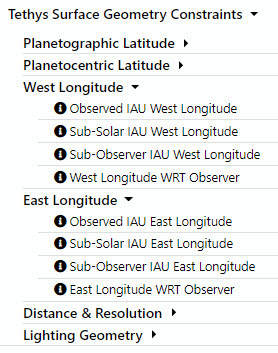This month we added two new datasets to OPUS: Galileo SSI volumes pre-Jupiter, and New Horizons volumes post-Pluto. We also fixed a few bugs and added a new set of "East Longitude" fields.
Galileo SSI
OPUS now contains 10,624 new observations taken by Galileo SSI from PDS volumes GO_0002 through GO_0016. These observations include fly-bys of Venus, Earth, and the Moon.
 |
| The Earth as seen by Galileo, December 11, 1990 |
New Horizons
OPUS also now contains 10,224 new observations taken by New Horizons after its encounter with Pluto, including its encounter with Arrokoth.
 |
| Arrokoth as seen by New Horizons, January 1, 2019 |
New East Longitude Fields
In Surface Geometry Constraints, the various longitude fields have been divided into two sections: west and east. The east fields are new, and have been added to make searching easier. The IAU longitude fields are equal to 360 minute the corresponding west field. The WRT fields (which range from -180 to +180) are the negative of the corresponding west field.
Other Changes
We also made a number of small bug fixes to the metadata, including:
- The COCIRS_0xxx and COCIRS_1xxx volumes now have values for wavenumber resolution. In addition, the Cassini Observation Name has been corrected, which also changes the values of Activity Name, Cassini Target Name, and Saturn Orbit Number.
- The maximum wavelength for Cassini UVIS EUV and FUV observations is now correct.
- There are now preview diagrams for the Cassini UVIS occultations volume COUVIS_8001.
As always, we solicit your comments, feedback, and questions!

No comments:
Post a Comment